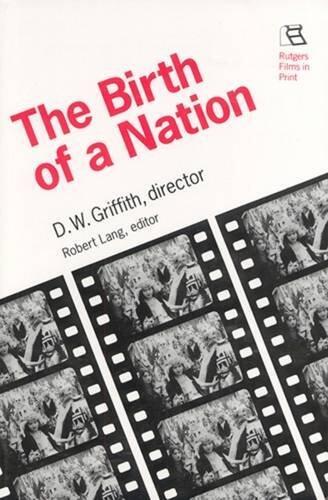
Birth of a Nation: D. W. Griffith, Director
작성자
Robert Lang
아직 평점이 없습니다
Action & Adventure
History
형식
하드커버
페이지
320
언어
영어
출판됨
Jan 1, 1994
출판사
Rutgers University Press
판
First Edition
ISBN-10
0813520266
ISBN-13
9780813520261
설명
Robert Lang delves into the life and work of D. W. Griffith, a towering figure in the history of American cinema. This detailed exploration reveals how Griffith's innovative techniques and storytelling methods transformed the landscape of film-making during the early 20th century. Lang examines Griffith's ambitious projects, including his most controversial and influential work, which not only broke new ground in cinematic artistry but also stirred significant cultural and racial debates.
Throughout the narrative, Lang provides insightful analysis of Griffith's contributions to the film medium, from the introduction of narrative storytelling to his pioneering use of close-ups and cross-cutting. He paints a vivid portrait of a complex director whose artistic legacy is intertwined with themes of race, identity, and the society of his time. The author does not shy away from addressing the moral implications of Griffith’s work, offering a balanced perspective that navigates both the innovation and the ethical dilemmas presented.
Readers will gain an appreciation for the turbulent context in which Griffith operated, marked by rapidly evolving technology and changing public perceptions. Lang’s consideration of Griffith's personal life, along with the historical backdrop, adds depth to the understanding of his artistic choices and the controversy that followed. This work serves as both a tribute to Griffith's achievements and a critical examination of the lasting impact of his films on contemporary society.
As it draws together threads of biography, film history, and social commentary, Lang’s examination stands as an essential read for anyone interested in the intricacies of film evolution and the complexities of its creators. The work invites reflection on the dual roles of art as both a tool for storytelling and a mirror to societal values.
Throughout the narrative, Lang provides insightful analysis of Griffith's contributions to the film medium, from the introduction of narrative storytelling to his pioneering use of close-ups and cross-cutting. He paints a vivid portrait of a complex director whose artistic legacy is intertwined with themes of race, identity, and the society of his time. The author does not shy away from addressing the moral implications of Griffith’s work, offering a balanced perspective that navigates both the innovation and the ethical dilemmas presented.
Readers will gain an appreciation for the turbulent context in which Griffith operated, marked by rapidly evolving technology and changing public perceptions. Lang’s consideration of Griffith's personal life, along with the historical backdrop, adds depth to the understanding of his artistic choices and the controversy that followed. This work serves as both a tribute to Griffith's achievements and a critical examination of the lasting impact of his films on contemporary society.
As it draws together threads of biography, film history, and social commentary, Lang’s examination stands as an essential read for anyone interested in the intricacies of film evolution and the complexities of its creators. The work invites reflection on the dual roles of art as both a tool for storytelling and a mirror to societal values.